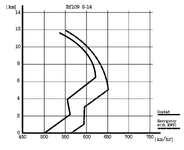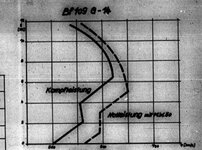Anybody know about this? It's the first Time I see this. Some interesting findings there.
Engineers Konstantin Ivanov and Vladimir Georgiev from a University of Sofia went to scientifically calculate performance stats of WW2 planes and compared it to those found in the works of William Green and Chris Chant.
Here I have a chart for the most important European important fighters:

Here is a site with more information about this work and lots more of aircraft stats.
It's only in German but maybe you can use some translator:
Flugleistungen der wichtigsten Flugzeuge - Luftkrieg über Europa 1939 - 1945: Die Angst im Nacken
Engineers Konstantin Ivanov and Vladimir Georgiev from a University of Sofia went to scientifically calculate performance stats of WW2 planes and compared it to those found in the works of William Green and Chris Chant.
Here I have a chart for the most important European important fighters:
Here is a site with more information about this work and lots more of aircraft stats.
It's only in German but maybe you can use some translator:
Flugleistungen der wichtigsten Flugzeuge - Luftkrieg über Europa 1939 - 1945: Die Angst im Nacken
Last edited:


